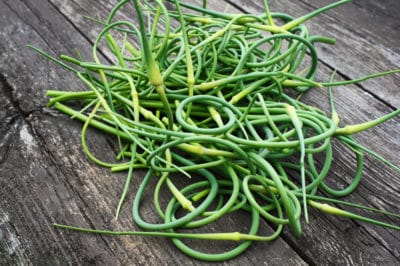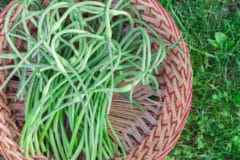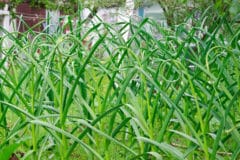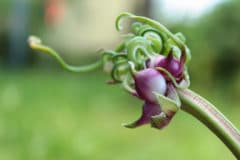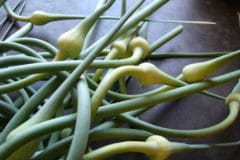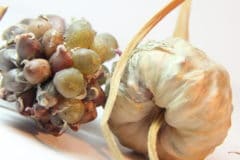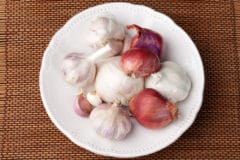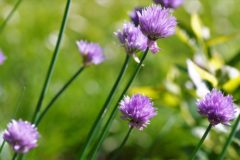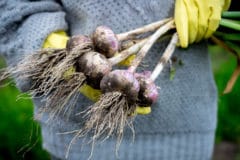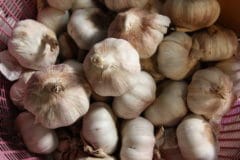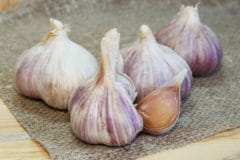About Garlic Reproduction
As an edible flowering bulb, garlic depends primarily on cloves to reproduce. However, hardneck garlic sends up a flower stalk called a scape. These scapes will flower and eventually produce tiny bulbs called bulbils. Some plants also produce seeds. Unless stressed by drought or extremely cold winters, softneck garlic rarely develops a scape. You harvest scapes at different times depending on your purpose.
Varieties for Scapes
Don’t count on softnecks if you want scapes; choose hardneck varieties instead. There are several main types. There are dozens of varieties within each group. The last three produce weaker scapes but grow in warmer climates:
- Porcelain
- Rocambole
- Purple Stripe
- Marbled Purple Stripe
- Glazed Purple Stripe
- Creole
- Asiatic
- Turban
When to Cut Scapes to Eat
Hardneck garlic gives you a double harvest – edible scapes and edible cloves. Although you can harvest scapes to eat as soon as they appear, cutting them when they have developed one full curl will give you the maximum amount of scapes to eat without harming clove production. Scapes can be eaten fresh, frozen, pickled or dried for storage.
When to Cut Scapes for Arrangements
If harvesting to eat the scapes, you can save a few to use in flower arrangements. Alternatively, you can skip the eating part and just use for arrangements. Your other option is to wait until the scapes have developed multiple curls but the flower buds have not yet opened – these are very dramatic. Finally, you can sacrifice clove development and let the scapes produce flowers or bulbils.
When to Cut Scapes for Bulbils
Bulbils are like small – some are no bigger than a grain of rice – garlic bulbs. Bulbils can be grown into full-sized garlic plants, although it takes several years. Growers use bulbils to rejuvenate a strain of garlic or to reproduce garlic without the risk of soil-borne disease. For bulbils, you don’t cut the scapes until the bulbils are pushing their capsules open.
When to Cut Scapes for Seeds
Most garlic plants don’t produce numerous or viable seeds. However, some of the seeds will grow. Since garlic usually reproduces through cloves and bulbils that are clones of the parent plant, using seed promotes genetic diversity. For seed production, let the scape remain until the seeds are fully developed and beginning to dry. Crush the head over paper to collect seed.
